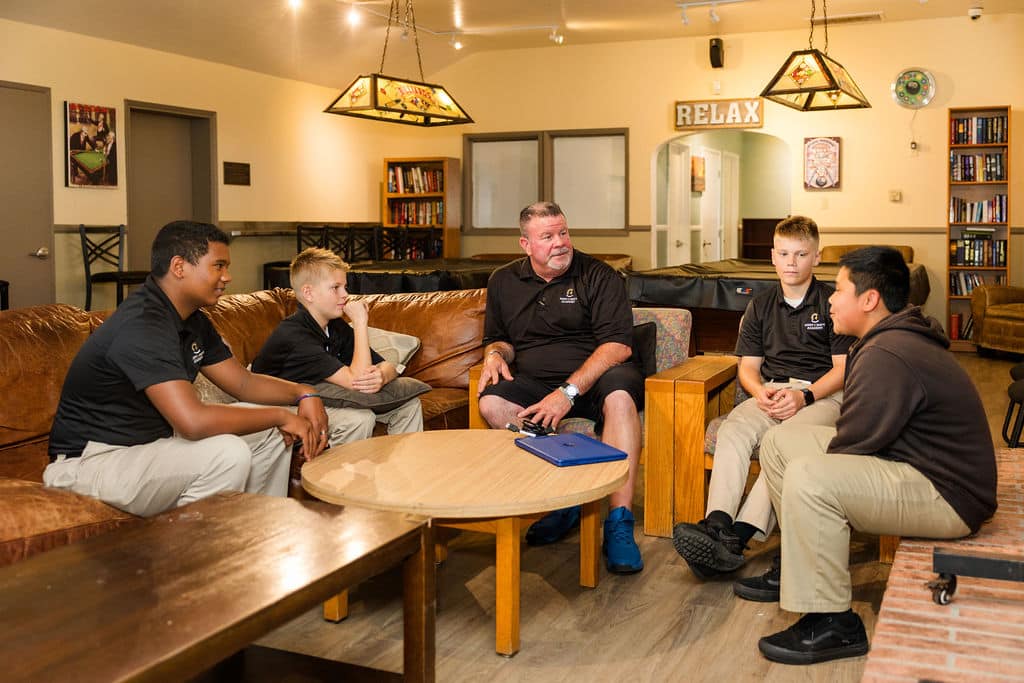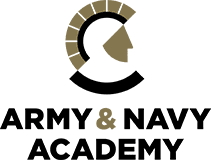
Effective Communication is Key to Resolving Conflicts – But Wait, There’s More…
- “What we’ve got here is failure to communicate.” – Prison guard “in conflict” with stubborn prisoner in “Cool Hand Luke.”
- “Conflicts are neither constructive nor disruptive but the ways these are handled make them either positive or negative.” – Abdul Ghaffar, Ph.D, Education professor at Qurtuba University of Science and Information Technology
Like it or not, conflict is an unavoidable human phenomenon. Where and when humans interact with each other, there is an eventual certainty that at some point in time, different personal preferences, ideas, likes and dislikes will create some level of conflict.
Conflict can actually be positive
That’s not to say such occurrences are always negative. A 2009 article by Professor Abdul Ghaffar from Qurtuba University in the Journal of Managerial Sciences argues that conflict is often needed when it …
- helps to raise and address problems;
- energizes work to be on the most appropriate issues;
- helps motivate people to participate; and, and to
- helps people recognize and benefit from their differences.
“Conflict isn’t the same as discomfort,” Ghaffar wrote. “The conflict isn’t the problem – it is when conflict is poorly managed that it is the problem.”
There are differences causes and types of conflict
It shouldn’t be a surprise to anyone that there are different causes and other factors that create conflict. Again, Ghaffar produces a long list of causes; the more relevant ones being paraphrased as follows …
- Affective Conflict, a “I’m mad as h—” condition that arises when group members have interpersonal clashes that are characterized by anger, frustration, and other negative feelings;
- Substantive Conflict that arises when group members disagree about the task or goal at hand, such as what an organizations’ current strategic position should be or what data to include in a report;
- Conflict of Interest takes place when there’s an inconsistency between two parties for how a scarce resource is to be allocated. This, despite the fact the parties in dispute have the same understanding of the situation – i.e. that the resource is in scarce supply;
- Retributive Conflict which, as its name suggests, takes place when the conflicting parties feel the need for a drawn-out conflict to punish the opponent;
- Conflict in Values occurs when two social entities differ in their values or ideologies on certain issues;
- Goal Conflict, something that arises when the parties involved disagree about what the preferred outcome of a task or situation should be; and last,
- Displaced Conflict when the conflicting parties either direct their frustrations or hostilities to social entities that are not involved in the conflict or argue over secondary, if not insignificant issues.
The most likely sources of conflict are poor communication, competition for common but scarce resources, disputes over roles, and just plan incompatibility when it comes to approaches and outcomes of goals. However, it’s not by happenstance that communication heads the list since it is the singular tool needed to resolve all sources listed here and elsewhere. But, when used poorly or not used at all, it also can be the catalyst that can hurl parties headlong into a conflict.
Christine Switzer, a writer on workforce issues, noted in a recent article that a primary challenge of effective communication is to prevent conflict escalation. “Conflict escalation can result in broken communication, false assumptions and negative commitments, all of which can further complicate the initial conflict.”
One major benefit effective communication has in resolving a conflict is the resultant reduction in anxiety, whether within a family or in the workplace. Stewart Levine, an attorney and author of “Getting to Resolution: Turning Conflict Into Collaboration,” emphasizes the need to “address your real concerns” and “get to the core of the conflict.” Active listening skills, include talking less and asking questions for clarity. Using effective verbal – and nonverbal – communications further contributes to a successful resolution of conflict, either between individuals or within a group.
Schools can be breeding grounds for some forms of conflict
Schools and other education-based institutions are especially fertile ground for conflict. For one thing, schools are composed of different young people interacting with different peers and adults of different ages; factors that create different frames of context and reference. Donna Crawford and Richard Bodine from the National Center for Conflict Resolution Education (NCCRE) have cited research into school conflicts that show the largest number of conflicts that become violent often start as relatively minor incidents. Actions such one student using another’s property without permission or harmless but unwelcome physical contact can lead to a major conflict. Most such conflicts tend to occur between individuals who knew each other. The common goal of violent acts typically involve retribution – pay back so to speak. Crawford and Bodine said further research has indicated violent acts in these cases are not the result of an absence of values, rather they stem from a value system that accepts violence.
General conflict resolution strategies
There’s an abundance of lists of what to do and not do in conflict situations, including the Crisis Prevention Institute’s “Top 10 De-escalation tips” that bear keeping in mind.
- Be empathetic and non-judgmental. Whether or not you think the other person’s feelings are justified, they’re real to that person. Pay attention to them.
- Respect personal space. Allowing personal space tends to decrease the other person’s anxiety and can prevent the incident from getting worse. Try to stand or be no closer than a couple of feet from the other person.
- Use non-threatening non-verbals. The more a person loses control, the less they hear the other person’s words. Be mindful of your gestures, facial expressions, movements and tone of voice.
- Avoid over-reacting. Remain calm, rational, and professional. You can’t control the other person’s behavior; how you respond to their behavior will have a direct effect on whether the situation escalates or diffuses.
- Focus on feelings. Facts are important, but how a person feels is the heart of the matter. Watch and listen carefully for the other person’s real message.
- Ignore challenging questions. When a person challenges your authority, redirect their attention to the issue at hand.
- Set limits. If the other person’s behavior is belligerent, overly defensive or disruptive, give them clear, simple, and enforceable limits. Offer whatever positive choices or options first.
- Choose wisely what you insist upon. Decide which rules are negotiable and which are not. If you can offer a person options and flexibility, you might be able to avoid unnecessary altercations.
- Allow silence for reflection. Silence can be a powerful communication tool by giving a person a chance to reflect on what’s happening and how he or she needs to proceed.
- Allow time for decisions. People who are upset might not be able to think clearly at a moment’s notice. Give them a few moments to think through what you’ve said.
Conflict resolution strategies and tools for schools
All the above tips pertain to crisis response strategies for schools. However, schools are specially equipped to turn inevitable conflicts that occur into teaching opportunities. For one thing, a teacher can function as a mediator to bring order and map out the course to resolve the conflict. Many mediators use ROLE PLAYING by the individuals in conflict which helps ease tensions by bringing a spot of levity to the conflict resolution process. By placing the affected students in opposing roles where can act out their opponent’s point of view, they can learn how to be more empathetic towards the other party and people in general and even begin to understand the opposing point of view.
TRACKING is another resolution tool by which students are assigned to observe and track various conflicts they have either witnessed or participated in over a period. Crawford and Bodine suggest these episodes be tracked in a journal and written – without specifically identifying the students involved. Students should be encouraged to be on the lookout for situations where conflict resolution is needed. At some point, the students volunteer their observations and discuss with others the positives and negatives of the conflicts they’ve observed. It helps prepare those observing conflicts to be in position to handle them when they themselves become involved in an incident.
LISTENING, as briefly referenced earlier, can do much to minimize or eliminate the misunderstandings and miscommunication take created the conflict. Teaching students good listening habits is an important tool. Crawford and Bodine suggest teachers start with a classroom discussion about recent student conflicts, predicting that those involved would likely say something to the effect, “He wouldn’t listen…” or “They didn’t understand what I was saying…”
Good LISTENING techniques that should be taught include…
- Looking directly at the speaker and make eye contact;
- Letting the speaker talk without interruption;
- Not giving advice or offering suggestions;
- Giving the speaker positive nonverbal reinforcement by nodding or smiling; and
- Repeating what the listener heard in his or her own words.
WRITING ABOUT THE CONFLICT gives them a time out or cooling-off period and makes them reflect on the incident in a more reasonable manner. In writing about the conflict they find themselves in, students should include how the incident has made them feel and what other choices should they have made to prevent or minimize the level of conflict. Crawford and Bodine suggest they be asked to respond to, “List 3 things that you would do differently now that you’ve had a chance to think about better options.”

Candace Heidenrich is the CEO of Aperture Advisory Associates, where she works with private secondary and higher education leaders to strengthen programs and practices. She founded Aperture in 2018 after more than a decade in a senior administrative role at a boarding school in California. Additionally, she held faculty and chair positions at private schools and colleges in Los Angeles and Ojai. Her background also includes director and executive level positions with start-ups and Fortune 500 corporations.
While earning her B.A. in Education and Humanities in the Lawrence Henry Gipson Scholar program, she studied abroad at Oxford before pursuing her master’s at the University of California, Santa Barbara. A frequent speaker at national conferences, she is a recognized thought leader and authority on enrollment management and marketing best practices.